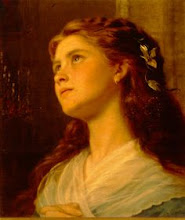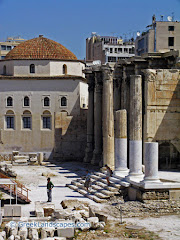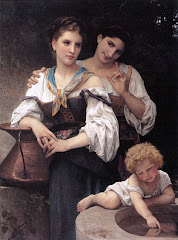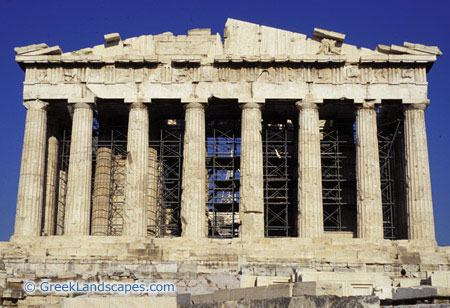


He could draw a leaf or a hand, a fern or a rock, in ways miraculous to behold. No one ever matched his renditions of light and shade, or his genius for investing a flat surface with a scene of haunting mystery. Yet, for Leonardo Da Vinci - creator of the "Mona Lisa," and "The Last Supper" - artistic greatness was but one of his incredible endowments.
Leonardo Da Vinci was bewitched by everything: a baby's smile, birds in flight, the pageant of the planets. He loved the human face and form, and sketched an absorbing gallery of warriors, crones, old men - and bodies with the skin peeled off to reveal the architecture of ligaments and muscles.
But Leonardo was far, far more than an artist. He was an engineer, a musician, an architect, a cartographer, a mathematician. He was an astronomer, a botanist, a zoologist, a geologist, a physiologist. He was the first man to make wax impressions of the brains interior, to consider using glass or ceramic models so that the workings of the heart and eye could be understood. He was the first to draw an accurate representation of an opened womb (with an embryo inside) and the first to investigate why leaves are arranged the way they are around a stem.
In one of his many notebooks he drew a male figure in a square inside a circle, the legs together, then set apart, the arms horizontal, then at a 45-degree angle. "The span of a man's outstretched arms is equal to his height," he revealed. "The center of the circle formed by the extremities of the outstretched limbs will be the navel. The space between the legs...will form an equilateral triangle.
He was the first modern thinker and scientist, for he sought to discover the causes of things by direct observation and experiment - not, as did most 15th-century seers, in the words of Holy Writ, Aristotle or Thomas Aquinas. Science, he contended, is "the knowledge of all things taht are possible," and he was obsessed by what he called "saper vedere" (knowing how to see).
One of the most remarkable things about Leonardo is that he assumed he was able to understand anything. The entire universe, from the wings of a dragonfly to the birth of the earth itself was the playground for his deft intelligence.
Before Copernicus, he noted that the sun does not move around the earth and the the earth is a "star, like the moon." Before Galileo, he said falling objects falling objects accelerate their speed with distance, and suggested that "a large magnifying lens" should be used to study the surface of the moon. He was a pioneer in optics, in hydraulics, in the physics of sound and the nature of light. Sound moves in waves, he noted - which is why two church bells, one farther away than the other, struck simultaneously, are heard separately. and, noting a lag between a flash of lightning and a thunderclap, he concluded that light must travel faster than sound. In his investigations into the circulation of blood, he was able to describe arteriosclerosis, which he attributed to lack of exercise!
Four centuries before Darwin, Leonardo ventured this heretical thought: "Man does not vary from the animals except in what is accidental." He declared that the rings in the trunk of a tree record the years of its growth - and the annual moisture.
Nor is that all. Long before the Industrial Revolution, in a world that did not even have a screwdrivers, he created a monkey wrench, ratchets, jacks, winches, a lathe, and a crane that could lift an entire church. He designed a piston that moved by steam pressure and a sprocket chain with a round-toothed gear that would not slip. He invented a differential transmission that permitted a cart to take a curve with the inside wheel moving more slowly than the outside wheel.
He drew innumerable varieties of pulleys, springs, portable bridges, double-deck streets; a device to measure changes in the weather; an automatic "feed" for printing. He invented roller bearings and a scissors that opened and closed with one hand movement; also air-inflated skis - for walking on water.
He was the first man to recommend that air be harnessed a as source of power. He described an internal-combustion engine, an air-conditioning device, an odometer, a hygrometer. He even enumerated the cost benefits of mass production.
This supreme artist, who called war "a bestial madness," served as military engineer for Cesare Borgia. He invented a machine gun, the tank, the submarine. He created a frogman's diving suit, the snorkel, a warship with a double hull. (It could stay afloat after the outside hull was hit.)
He was forever fascinated by water: in ocean tides and waterfalls, breaking against the rocks, in a quiet pool, a stream, a river. He described things no one else had observed before: that the surface of a pond is moved by wind, yet the bottom remains still; that rivers run faster near the surface than they do near the bottom; that water never moves of its own volition except when it descends. He designed and supervised the buildings of canals all around the city of Milan, a feat still praised by engineers.
In no field was Leonardo more bold and original than aerodynamics: "A bird works according to mathematical law, which it is within the power of man to reproduce." He set caged birds free to study their takeoff, lift, wingspread. His eyesight was phenomenal, for he saw and drew things that were simply not visible to most men - until high speed photography "froze" motion.
In the 15th century, he invented the glider. and the parachute. And the helicopter. He described the value of retractable landing gears and wheels...
Leonardo was born in Vinci, near Florence, in 1452, the illegitimate son of a notary and a peasant girl. He was raised by his father and paternal grandfather. At an early age he showed extraordinary curiosity and exceptional skill in music, geometry and drawing. At 15, he was apprenticed to the famous painter Verrocchio, whom he astounded with his masterful draftsmanship and the luminous beauty of his painting.
"He was tall, graceful, very strong," raved contemporary artist Giorgio Vasari. He was also a fine fencer and a superb horseman. He improvised poetry, which he sang in a melodious voice to the accompaniment of a lute he himself had fashioned. By the time he was 28, Leonardo was acknowledged to be the greatest painter of his time - a period that included Michelangelo, Raphael, Botticelli.
But there was a dark, secretive side to Leonardo. He was restless and moody and feared crowds. He was never satisfied with his work forever blaming himself for not undertaking enough, yet breaking off commission after commission to begin some new, glittering project - which in turn remained uncompleted. "I wish to work miracles," he had written in his youth; later he often lamented having "wasted" so many days of his life.
Leonardo's famous notebook were a potpourri of pages of various sizes, left unstitched, or bound in small batches. His spelling was as wayward as his grammar - and he taught himself to write backward in what appeared to be a special code. Some 6000 pages have been discovered in collections all over Europe. They are surely the most remarkable record of creativity ever produced by one human being.
Leonardo died near Amboise, France, while at the court of Francis I. He was 67, a ripe old age in that distant day.
No one can explain him. "Genius" does scant justice to the phenomenal range and originality of his work. There is no name, from all history, to place alongside his. Put most simply, Leonardo da Vinci remains the most gifted human being who ever lived.
Author: Leo Rosten
























































No comments:
Post a Comment